
- What Features Does Google Keyword Planner Offer
- How to Collect Keywords Using Google Keyword Planner
Modern paid services simplify the creation of a semantic core, allowing you to quickly gather keywords with important data such as frequency, difficulty, traffic volume, and more. Their functionality can be explored for hours, but they have a significant drawback—the average monthly subscription costs around 150 dollars. With a limited budget, Google Keyword Planner comes to the rescue—a free keyword research tool that provides essential data. It has many limitations, but they can be bypassed, allowing you to collect a semantic core for search engine optimization and/or contextual advertising without additional costs.
What Features Does Google Keyword Planner Offer
First and foremost, Google Keyword Planner is a free keyword research tool for advertisers that helps find the best keywords for launching a Google Ads campaign. It allows you to discover keywords, assess their potential, and obtain data for budget planning, ultimately helping you develop a better marketing strategy.
However, Google Keyword Planner is also a useful tool for website owners, serving as a free alternative to Ahrefs, Serpstat, Semrush, and SE Ranking. That’s why we will take a comprehensive look at the features and advantages of Google Keyword Planner:
- Simple keyword search. Enter one or more keywords and receive relevant suggestions in your chosen language and country. Not sure where to start? Enter the domain of a similar website and get keywords from your selected pages or the entire site.
- Essential data. Google Keyword Planner provides not just a keyword list with search volume but also trends over the past three months and year, competition level, the lowest and highest bids for displaying ads at the top of the page, and more.
- Detailed forecast. Advertisers will find the "Forecast" tab useful, where they can see an approximate performance prediction for an upcoming ad campaign, considering budget, average cost per click, CTR, impressions, and clicks. It also includes a yearly forecast graph and statistics by device and location.
- Convenient management. You can filter data by any parameter, refine keywords, add relevant search terms and negative keywords, and adjust match types (broad, phrase, exact).
- User-friendly interface. Hovering over a parameter, such as "average monthly searches" provides a detailed explanation. If you need help, click "Help" to open a tab with answers to common questions, tips, and step-by-step instructions.
- Easy further use. The service allows you to download a keyword list in .csv format or save it to Google Sheets. Advertisers can also add keywords to an existing ad group or create a new one.
- Completely free. While the tool lacks some features of well-known competitors, all of the listed capabilities can be used entirely for free—no need to pay 150 dollars per month.
This is just a small part of the features and advantages of this free and functional service. However, Keyword Planner also has its drawbacks:
- No gray-area topics. The service is designed to assist advertisers who must follow strict rules when launching ad campaigns. If you try to find keywords related to gambling, microloans, trading, or 18+ products, you will receive limited data or none at all.
- Incomplete data. The tool often provides only a portion of the keywords, so you may need to expand your semantic core using other services.
- Limited search volume data. If you haven’t previously run ad campaigns through Google Ads, you will only see a frequency range next to the keywords instead of an exact number. For example, instead of seeing "500" searches for the query "website hosting" you will see "100–1K."
After reading about this last drawback, a logical question arises: why use Google Keyword Planner if it doesn’t show precise search volume? This limitation is understandable since the tool is designed specifically to assist advertisers. However, there is a way to bypass it, and we’ll discuss an effective method a bit later.
How to Collect Keywords Using Google Keyword Planner
How to Register in Google Ads
To access Google Keyword Planner, you need a Google account and an account in its advertising service. The first requirement is very easy to fulfill—just log in to your account or create one in a few clicks.
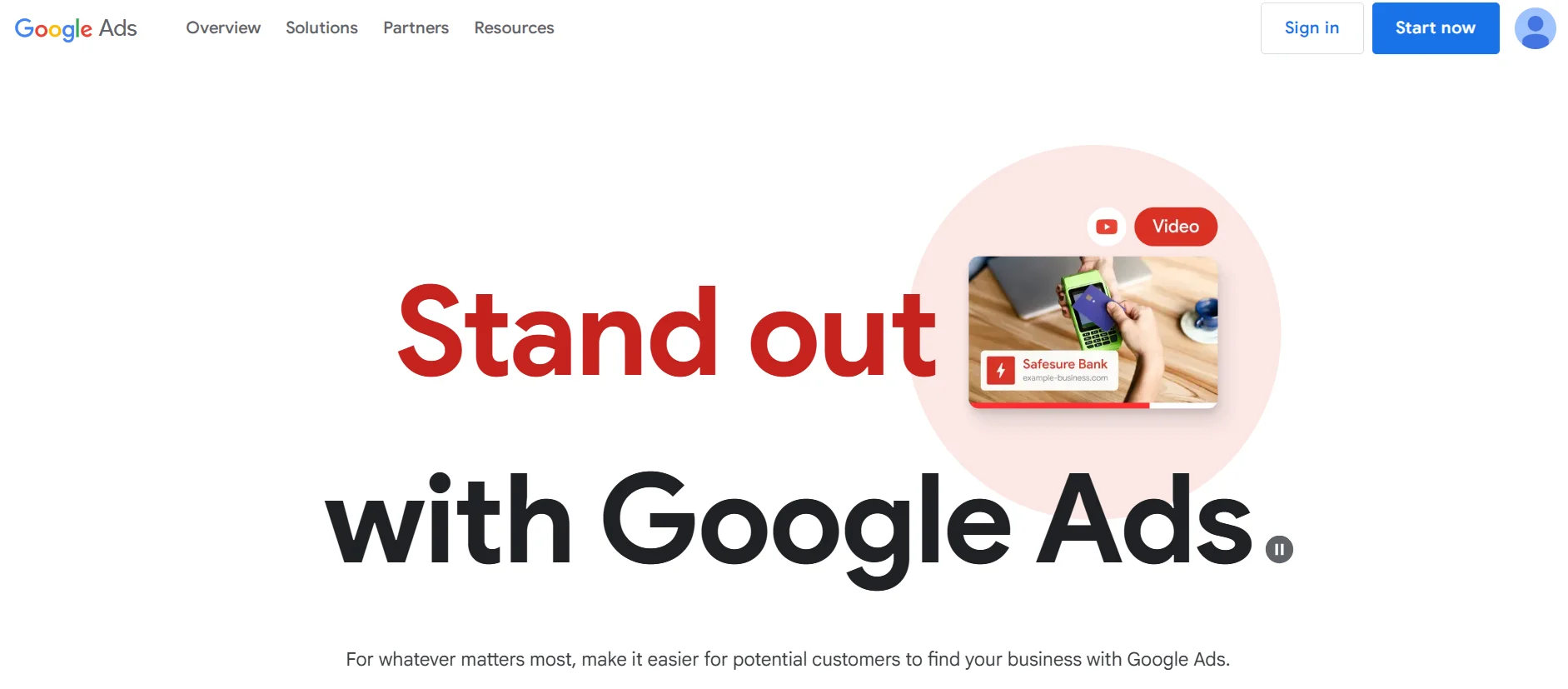
For the second requirement, go to the Google Ads page and click the “Sign in” button. A message will appear asking you to choose an existing account or create a new one. Select the second option.
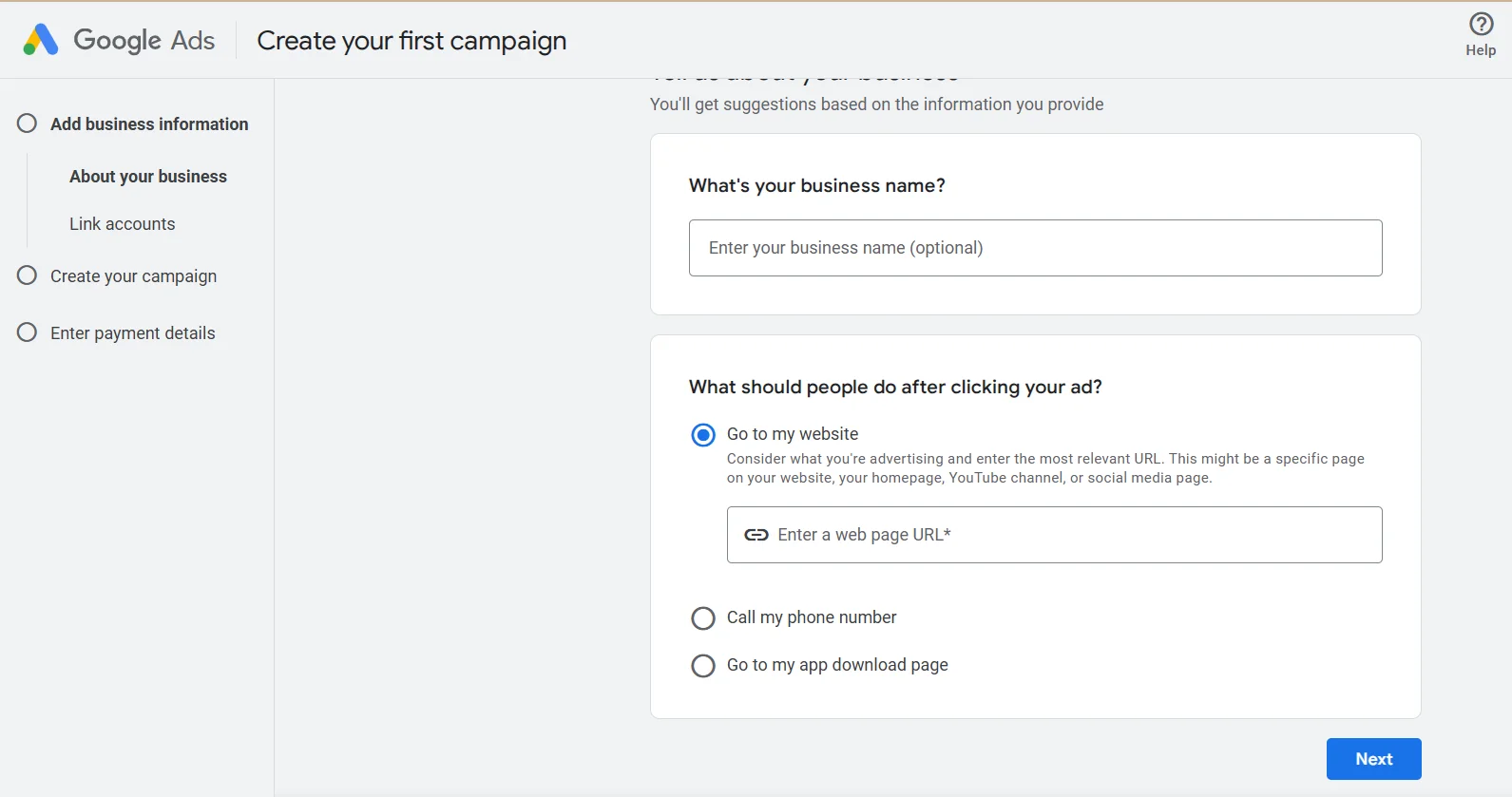
Now, you need to go through the process of creating your first advertising campaign. However, if you only need Google Keyword Planner right now, simply enter a website address (you can use any link), and on each subsequent step, click “Skip”.
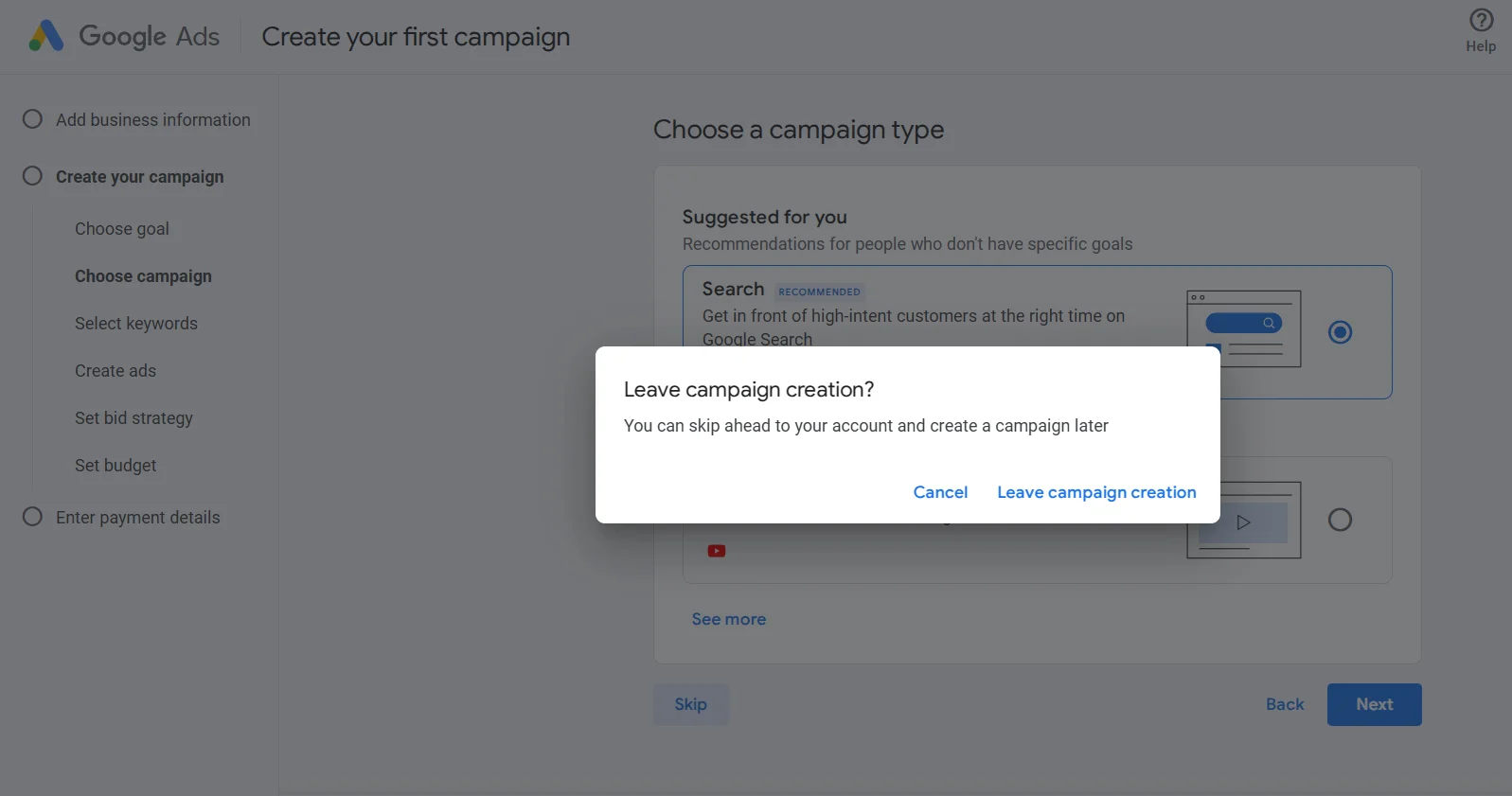
After clicking “Skip” several times, you will see the option to exit the campaign creation process.
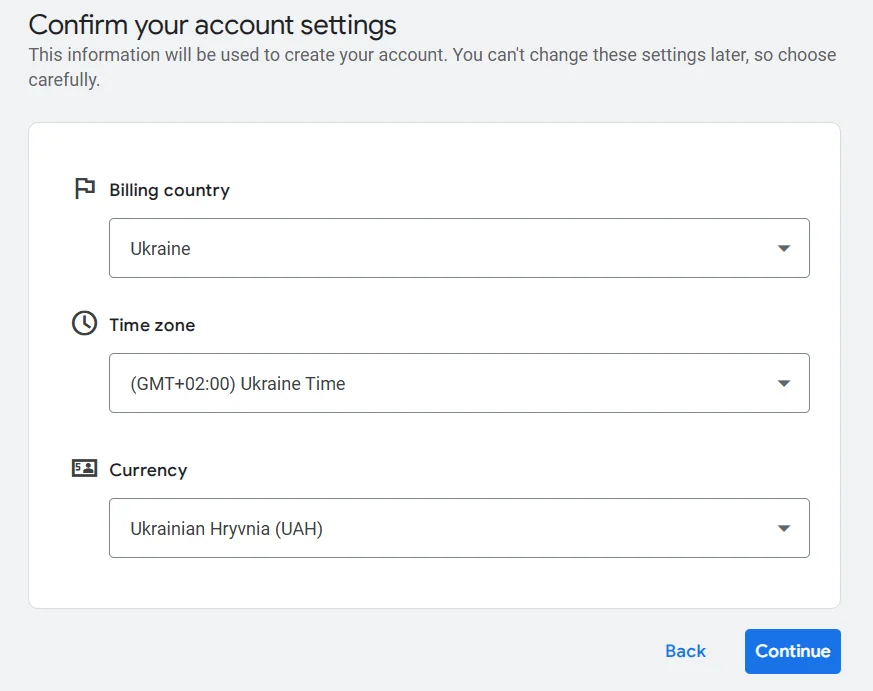
Next, you need to confirm the settings. The service automatically detects the parameters, so just click “Continue”.
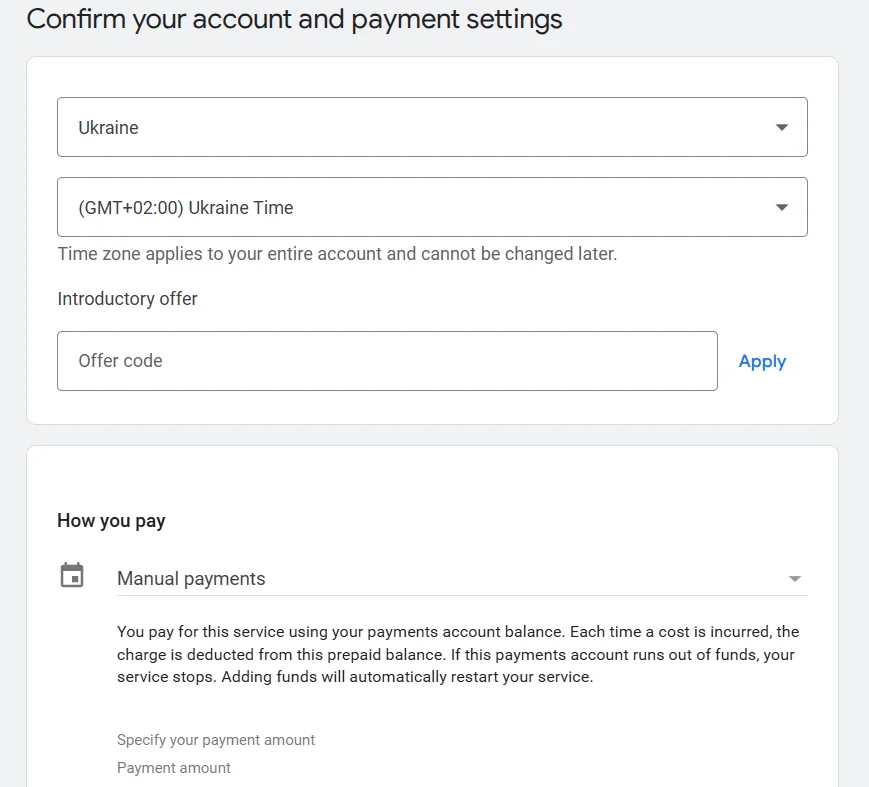
Then, another form will appear for confirming account and payment settings. Here, you must specify:
- the minimum payment amount — $5;
- your city and residential address;
- your postal code
Don't forget to accept the Google Ads Terms of Service, and choose whether to agree or decline personalized consultant recommendations and email notifications.
Important! If you later decide to launch an advertising campaign, go to the "Payments» section in advance and set up your payment information. No money will be deducted from your account until the campaign is activated!
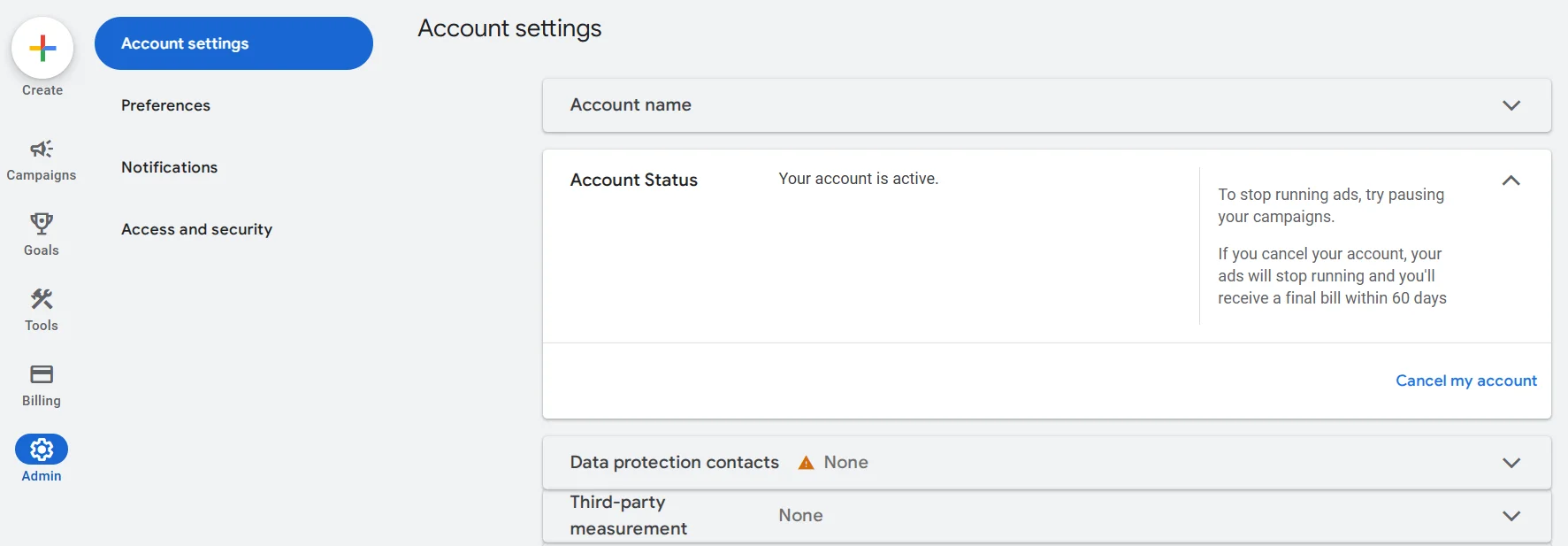
If you want to delete your account, go to “Admin” → “Settings” → “Status”, then click “Cancel my account”.
How to Find New Keywords in Google Keyword Planner
After completing the lengthy registration process, you now have access to Google Keyword Planner. Here, you can find new keywords at any time or retrieve data for existing search queries.
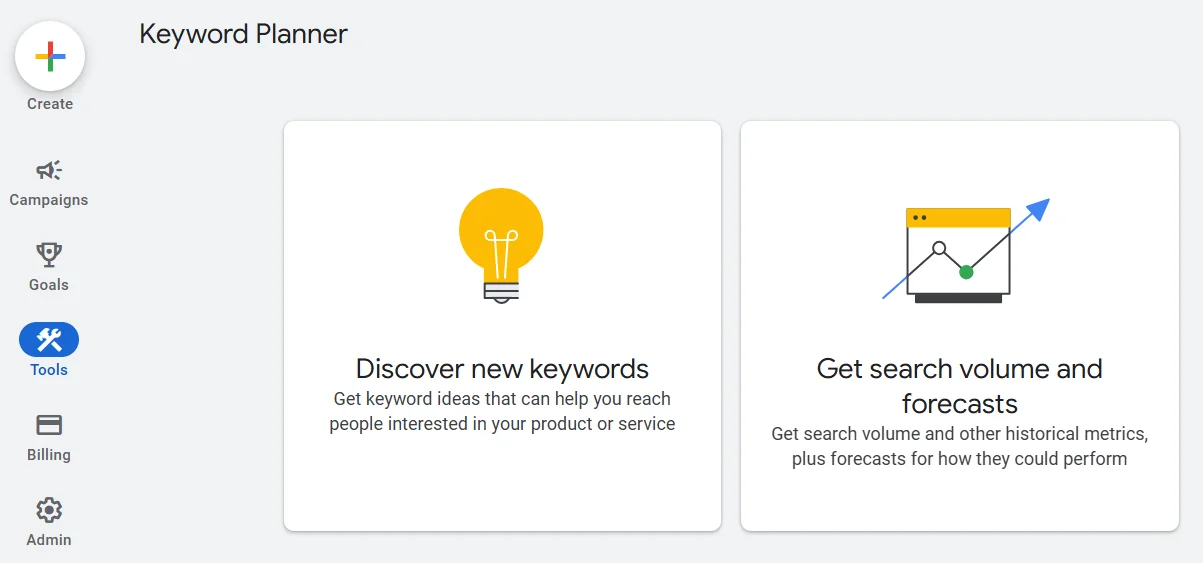
Let’s assume you are involved in website development. First, you need to find new keywords, so select the first tool.
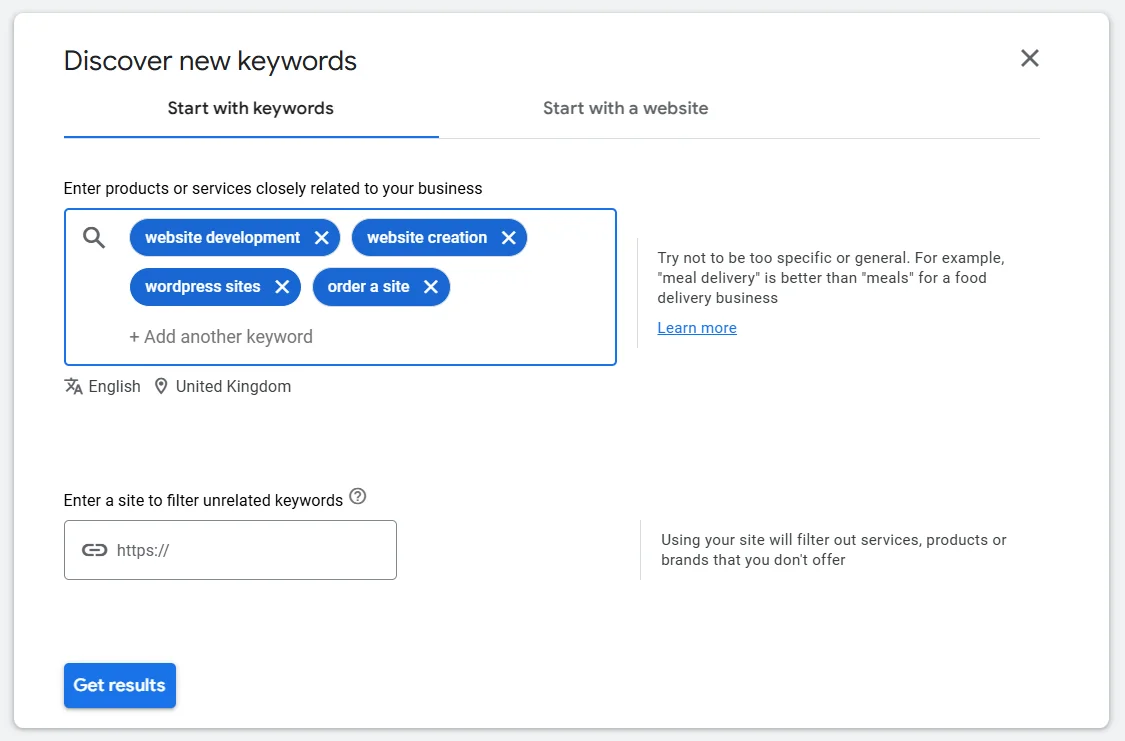
Enter a basic set of search queries and click “Get results”.
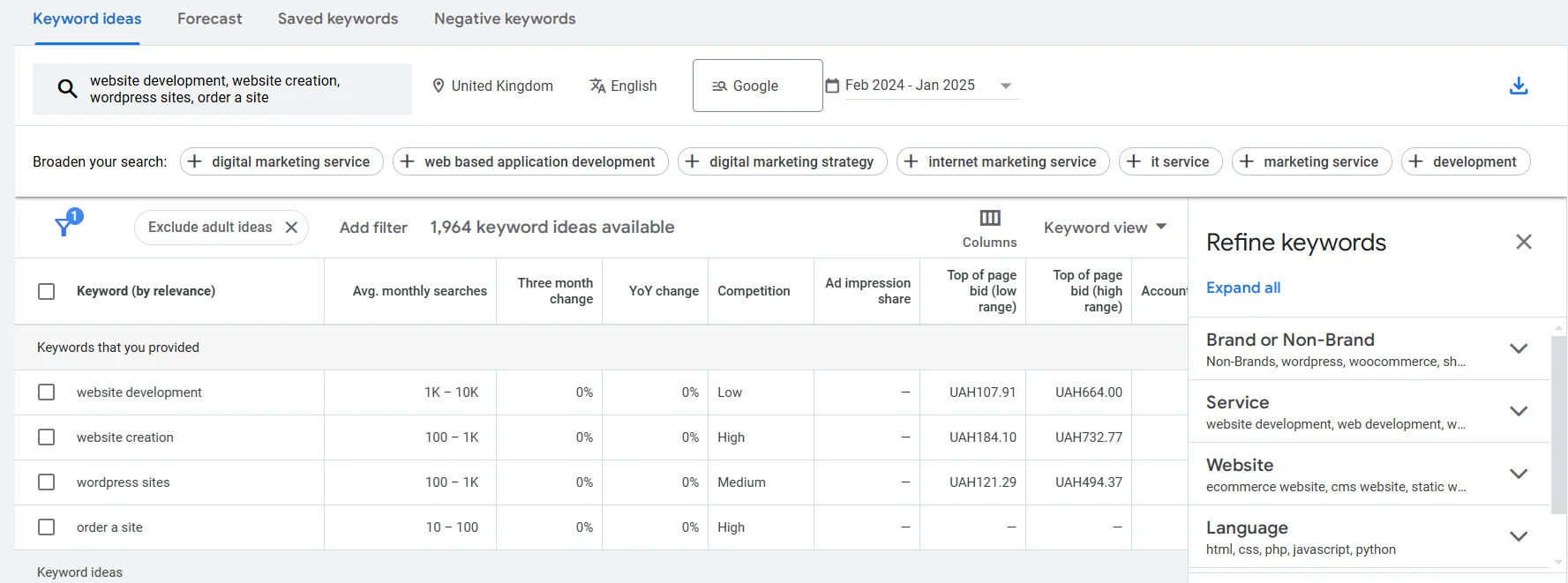
The tool found 1964 keyword suggestions. This is a relatively small number compared to Ahrefs, Serpstat, Semrush, and other well-known paid tools, but it’s sufficient for the initial stage. Additionally, Keyword Planner provides related keyword ideas based on your terms.
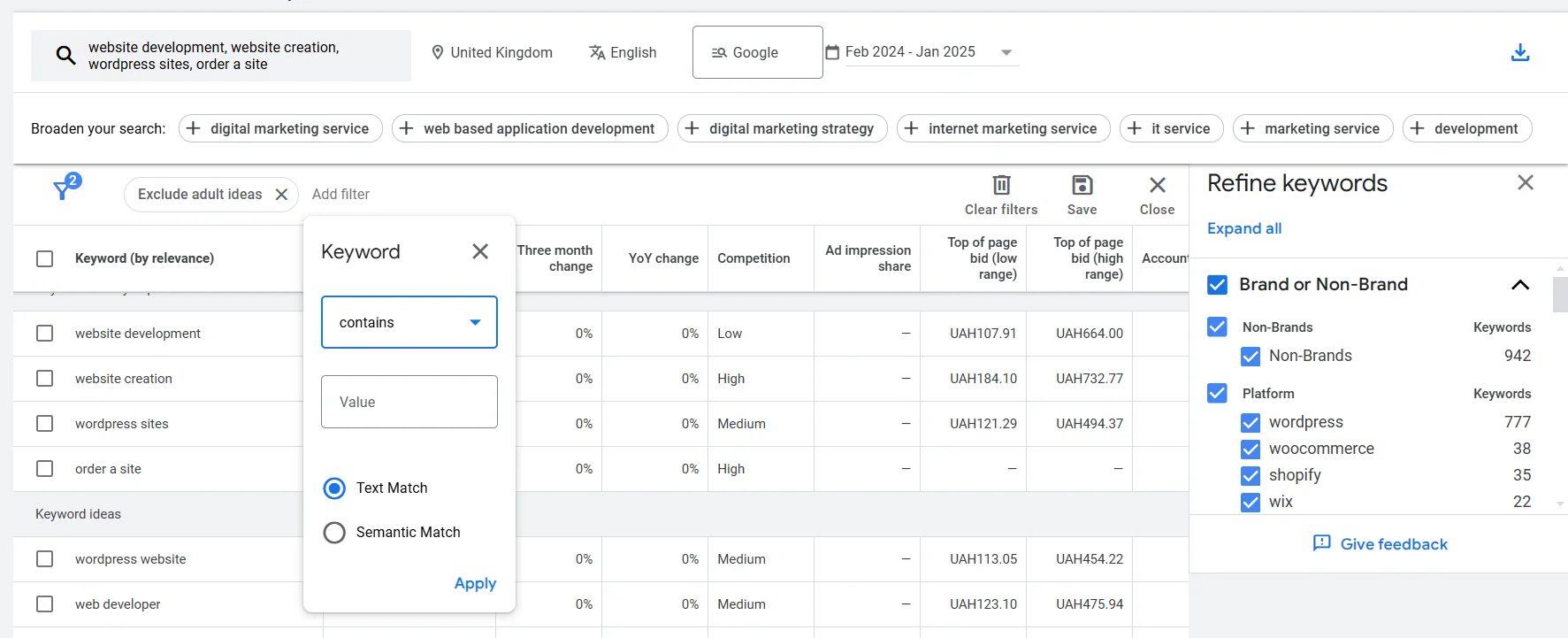
You can go straight to the “Refine Keywords” section and remove irrelevant branded queries. For example, if you create websites on WordPress, you don’t need keywords related to Wix or Ucoz. Also, review the database and mark the keywords you want to avoid. If you’re looking for clients for web development, you may want to exclude words like “free” or “services”. To do this, click “Add filter”, select “Keywords”, and enter the terms you want to exclude.
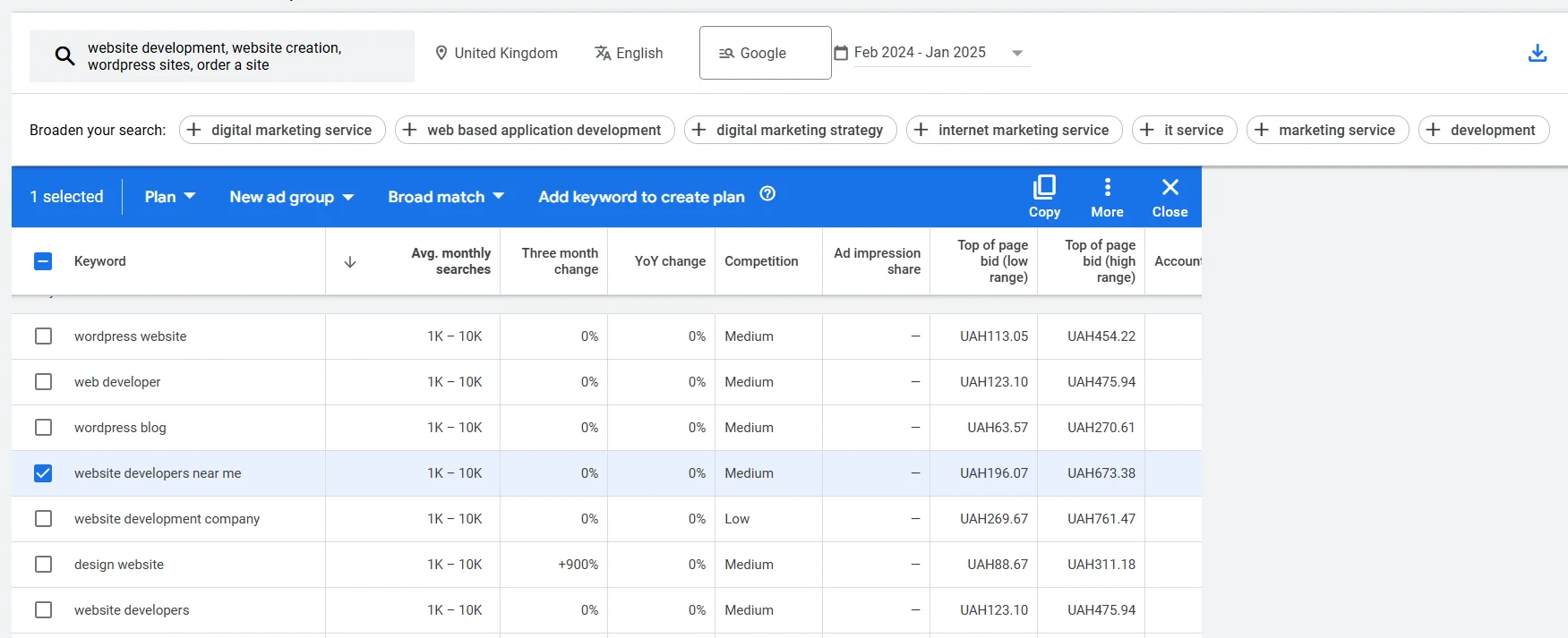
Now, check the box next to the desired keywords, then click “Add keyword to create plan”.
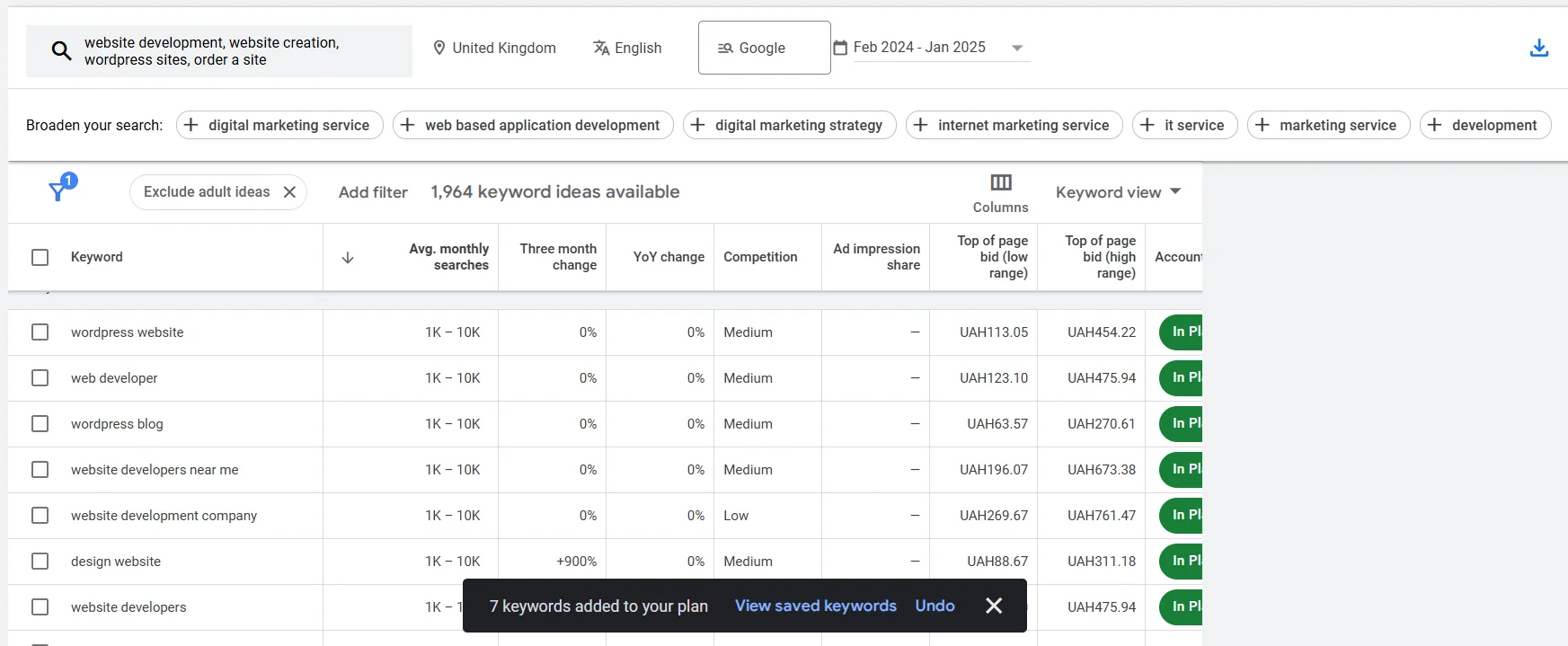
Click “View saved keywords”.
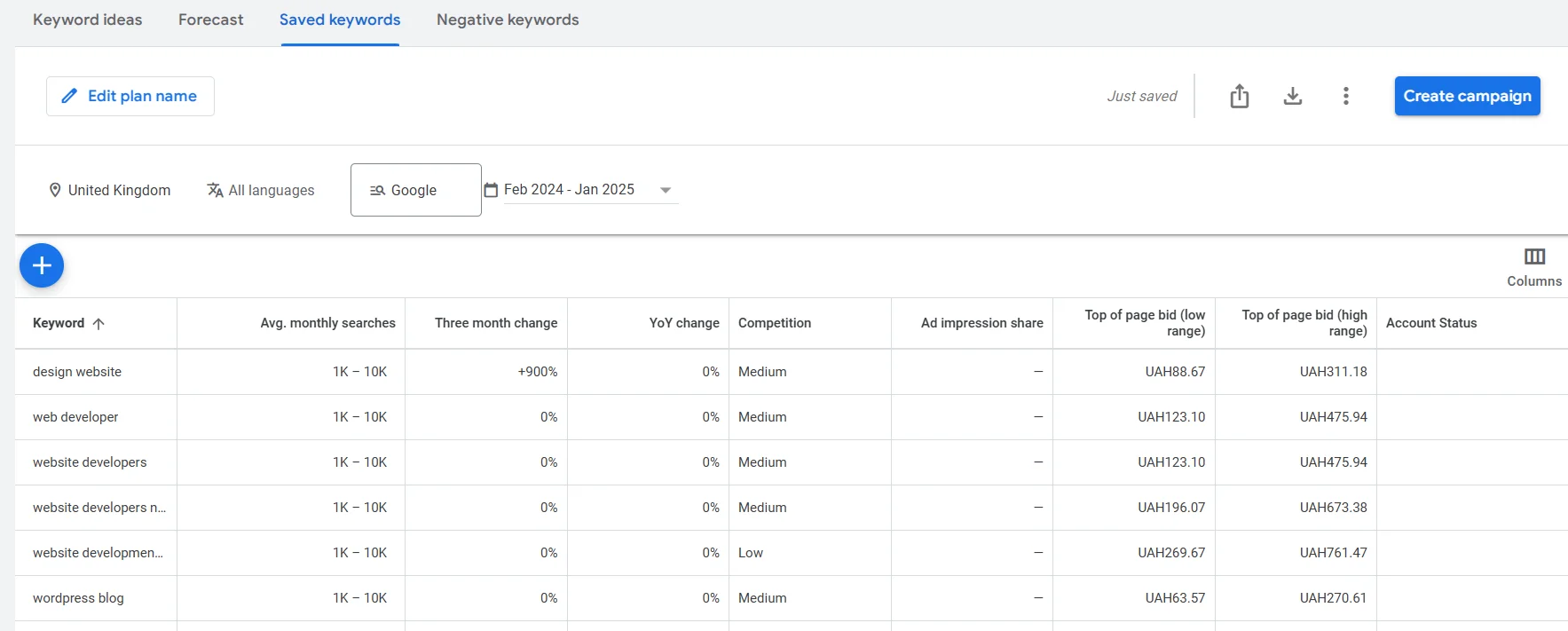
Now you have your keyword plan, which you can update at any time by adding new queries. When searching, focus on the parameters: “Average monthly searches” and “Three month changes (or compared to the previous year)”. There is no point in looking at competition, as this metric is for advertisers (Google Ads) and is unrelated to organic search traffic.
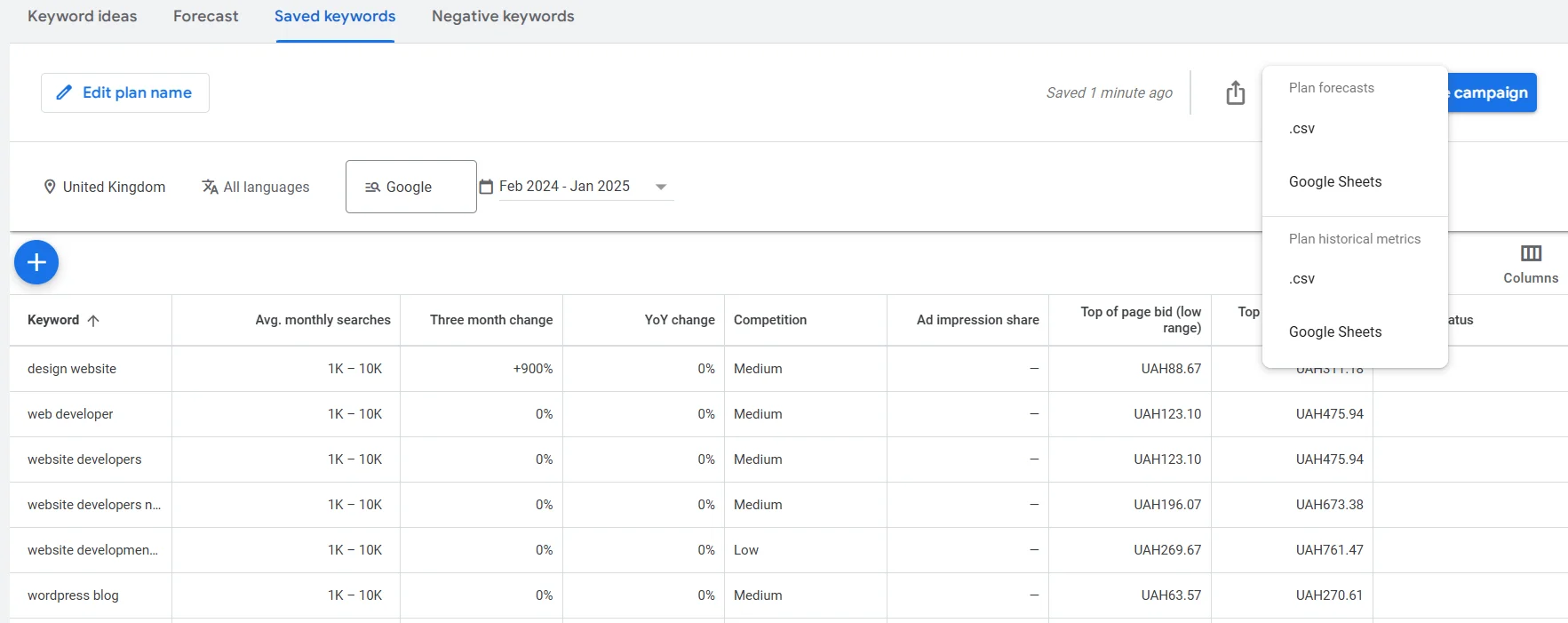
Clicking the “Download” icon allows you to save the data in .csv format or Google Sheets for easier editing and further use.

In the downloaded table, search volume data is displayed with greater accuracy than in the online tool.
Read also: How to create a semantic core yourself
How to Use Google Keyword Planner for Competitor Analysis
You have already found new keywords for your initial query set. However, the classic keyword search in the tool provides a limited number of suggestions compared to professional services. That’s why it's important to expand your semantic core manually. One of the most effective ways to do this is by analyzing competitors.
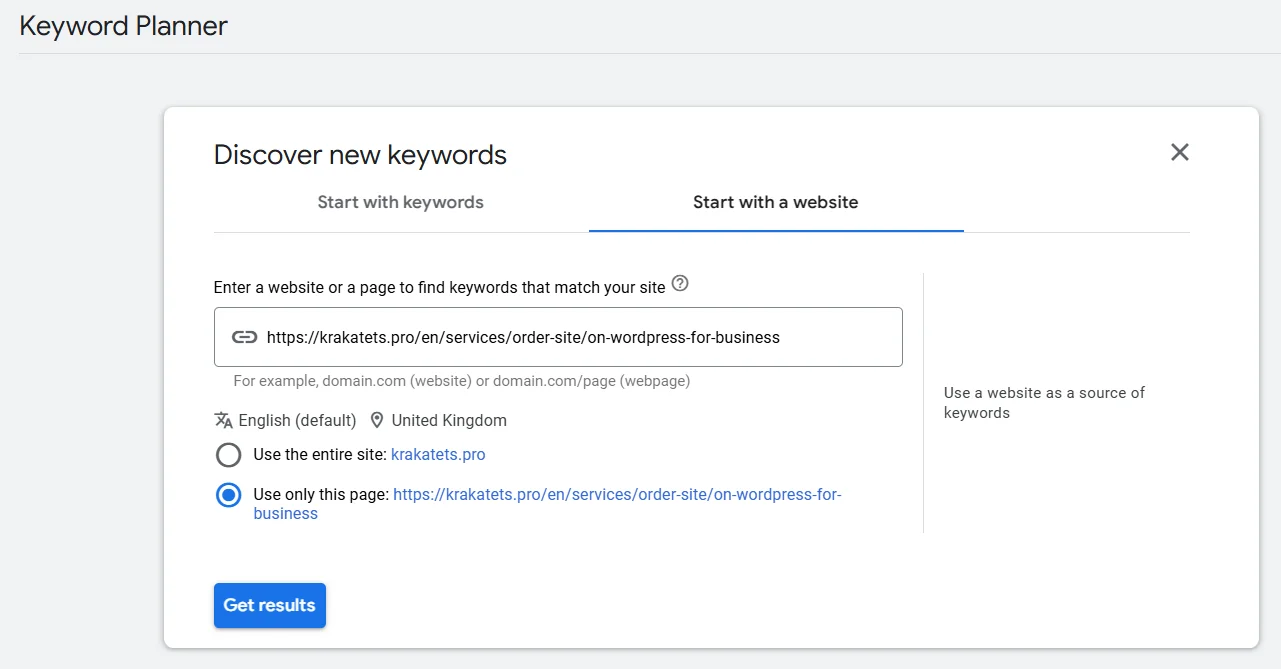
Take your main keyword, enter it into Google Search, find several competitors, and copy their website links. Go to Google Keyword Planner → “Start with a website”, and enter the copied URLs one by one. You can choose to collect keyword data from the entire site or just from a specific page.
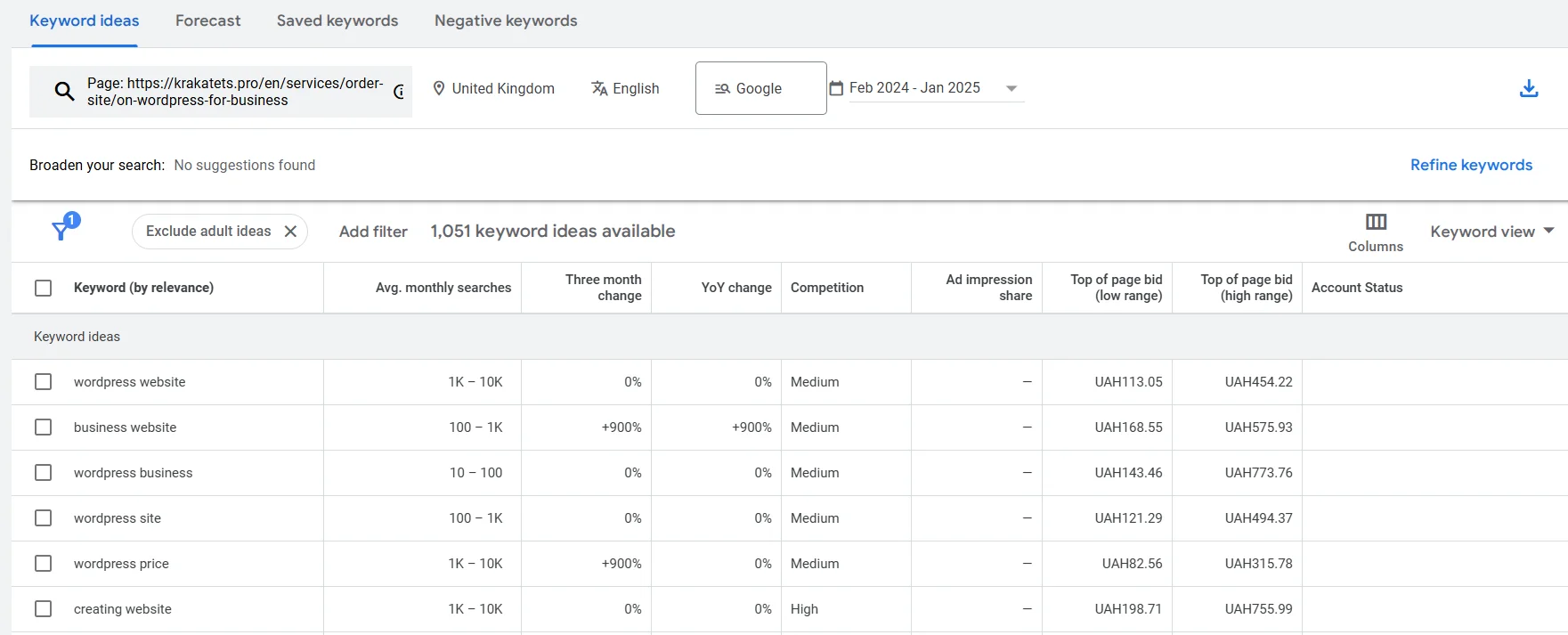
For example, let’s say we used the query “order a WordPress website” and selected the top-ranking page from Google search results. Even after removing the same keywords after the previous search, many new queries remain, which means that using competitor analysis in Google Keyword Planner can really significantly expand the semantic core.
Read also: How to Determine the Traffic of Someone Else's Website
How to Get Exact Search Volume Data
When analyzing a website, you might see a message saying, “To get accurate data, you need to run a campaign.” This applies to both search volume and competition levels. However, you can bypass this limitation by using other free keyword research tools.

Keyword Research from Semrush comes to the rescue — a tool for searching and analyzing keywords. You need to register, but you don’t have to subscribe to a paid plan. Just go to Keyword Overview, paste the key, select the country and click Search.
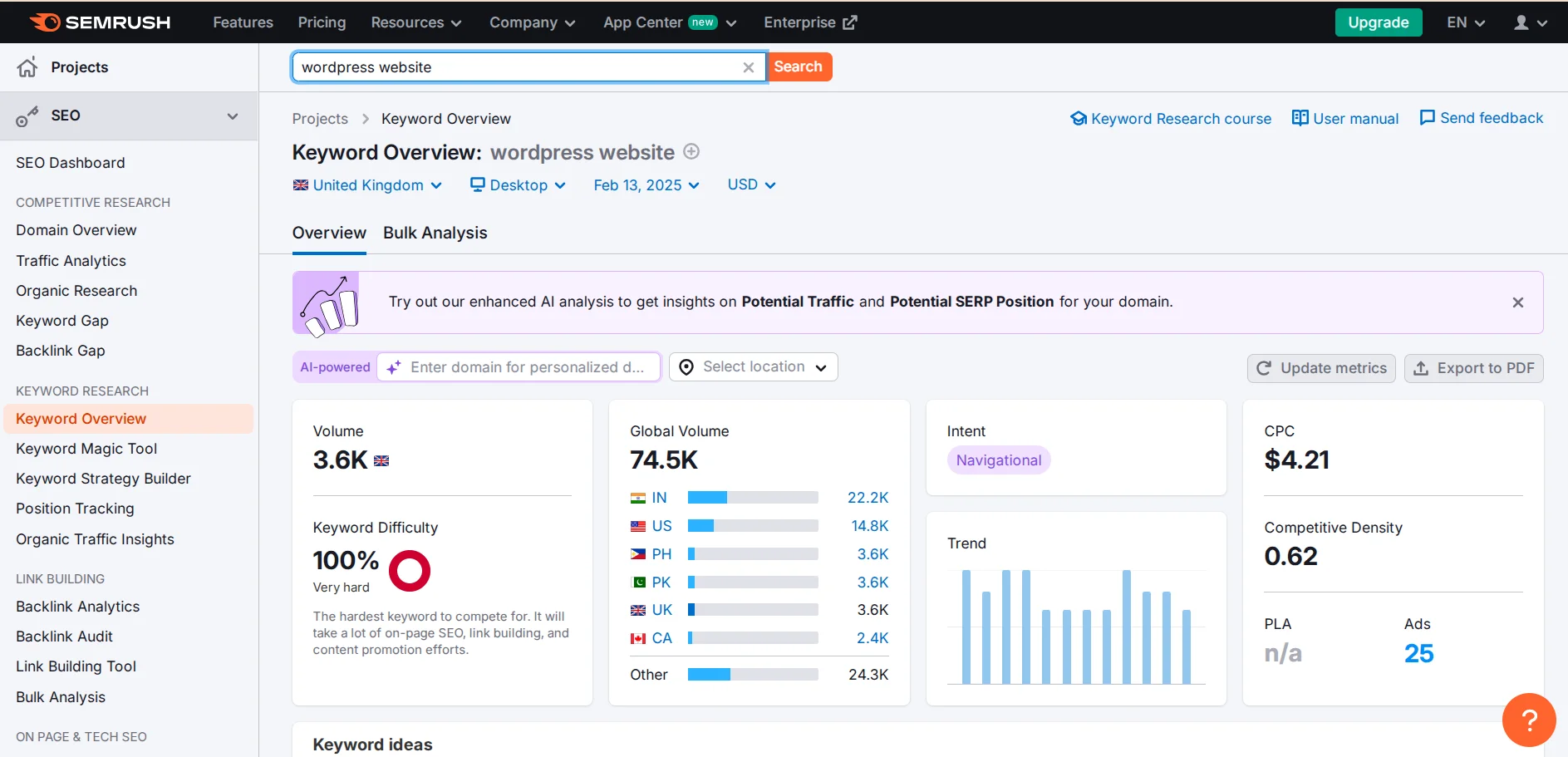
This will provide valuable insights, such as exact search volume in the target country and globally, query type (informational, navigational, transactional, etc.), keyword difficulty score, competitor list, related questions.
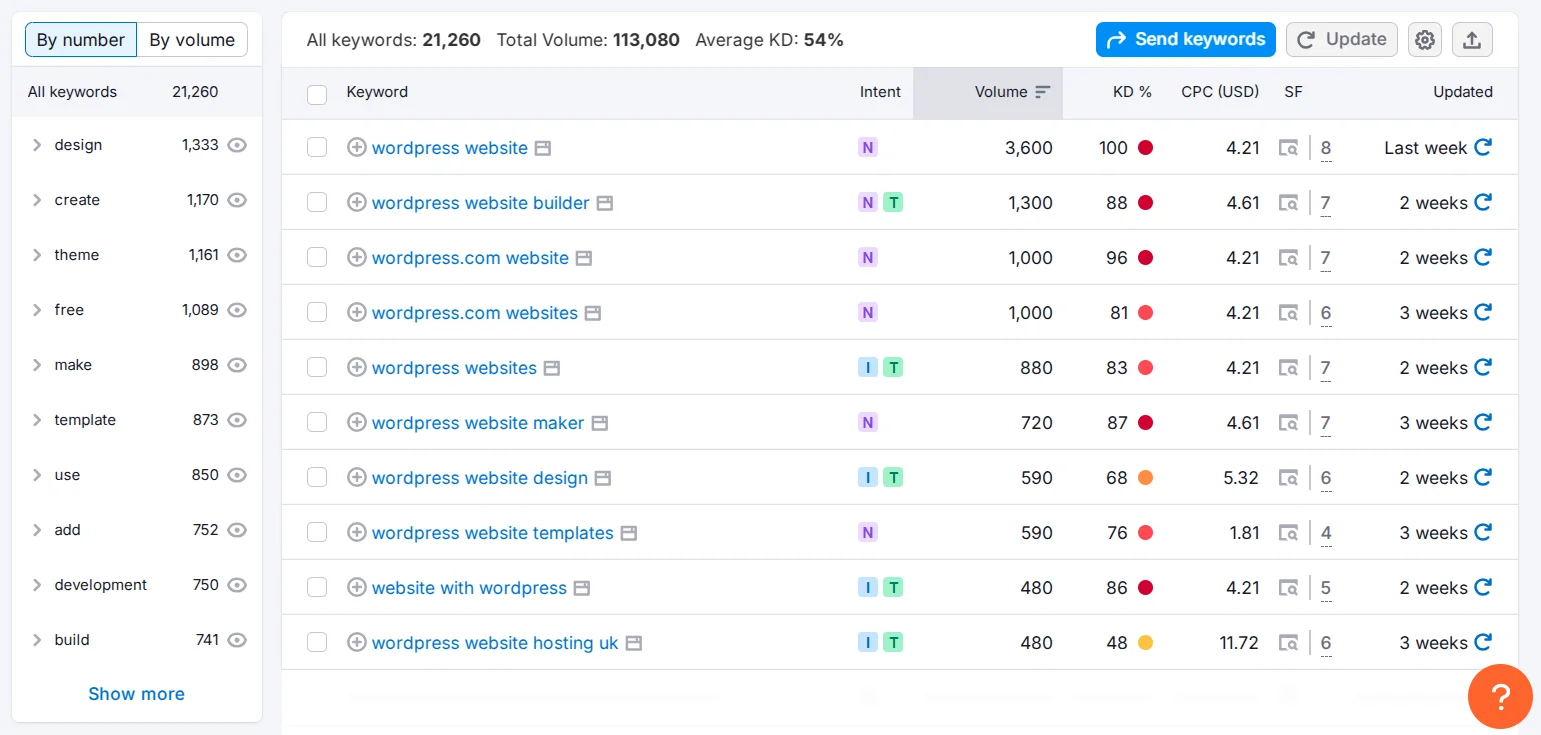
Why use Google Keyword Planner when Semrush is available? Limited number of keywords. If you go to Keyword Magic Tool, enter a keyword and try to find new ideas, you will only get access to 10 search queries.
Other free keyword research tools also have similar restrictions. Therefore, a great strategy is to find keyword ideas using Google Keyword Planner, and then analyze their exact search volume in Semrush.
How to Analyze Your Target Audience in Google Keyword Planner
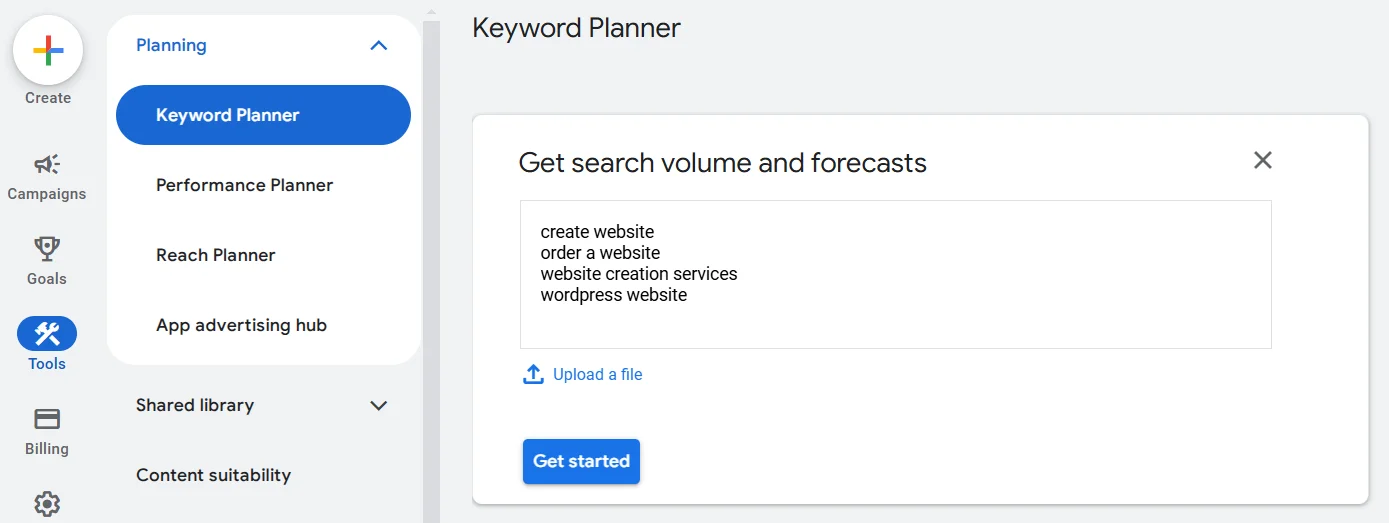
Go to Google Keyword Planner and select “Get search volume and forecasts”. Paste the previously found keywords and click “Get started”. Or better yet, collect keys, upload them in .csv format, then combine them into one table and click "Upload a file".
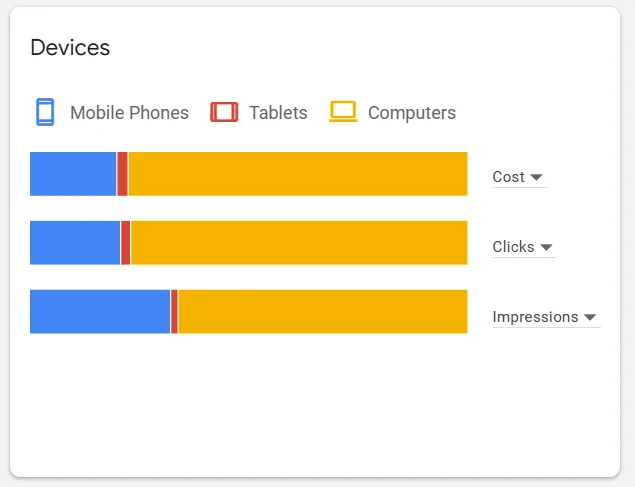
On the Forecast tab, you will see several important indicators. The first is devices. The data is divided into "mobile phones", "tablets", "computers".
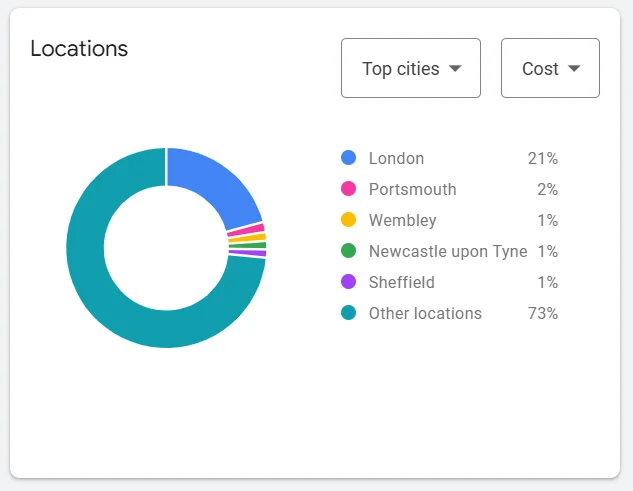
The second is location. It plays a key role for regional web resources, for example, you are creating a website for a clothing store in Portsmouth.
Google Keyword Planner is not an ideal tool for finding keywords. It requires time to create an account, displays a small number of search queries, especially in gray topics, provides limited data on frequency, shows the complexity for advertisers, not SEO specialists. However, it allows you to quickly find new ideas, even from competitors' sites. And you can get accurate data on each found key using other free services, for example, the same Keyword Overview from Semrush. This combination will allow you to collect the most useful semantic core without investing money.










